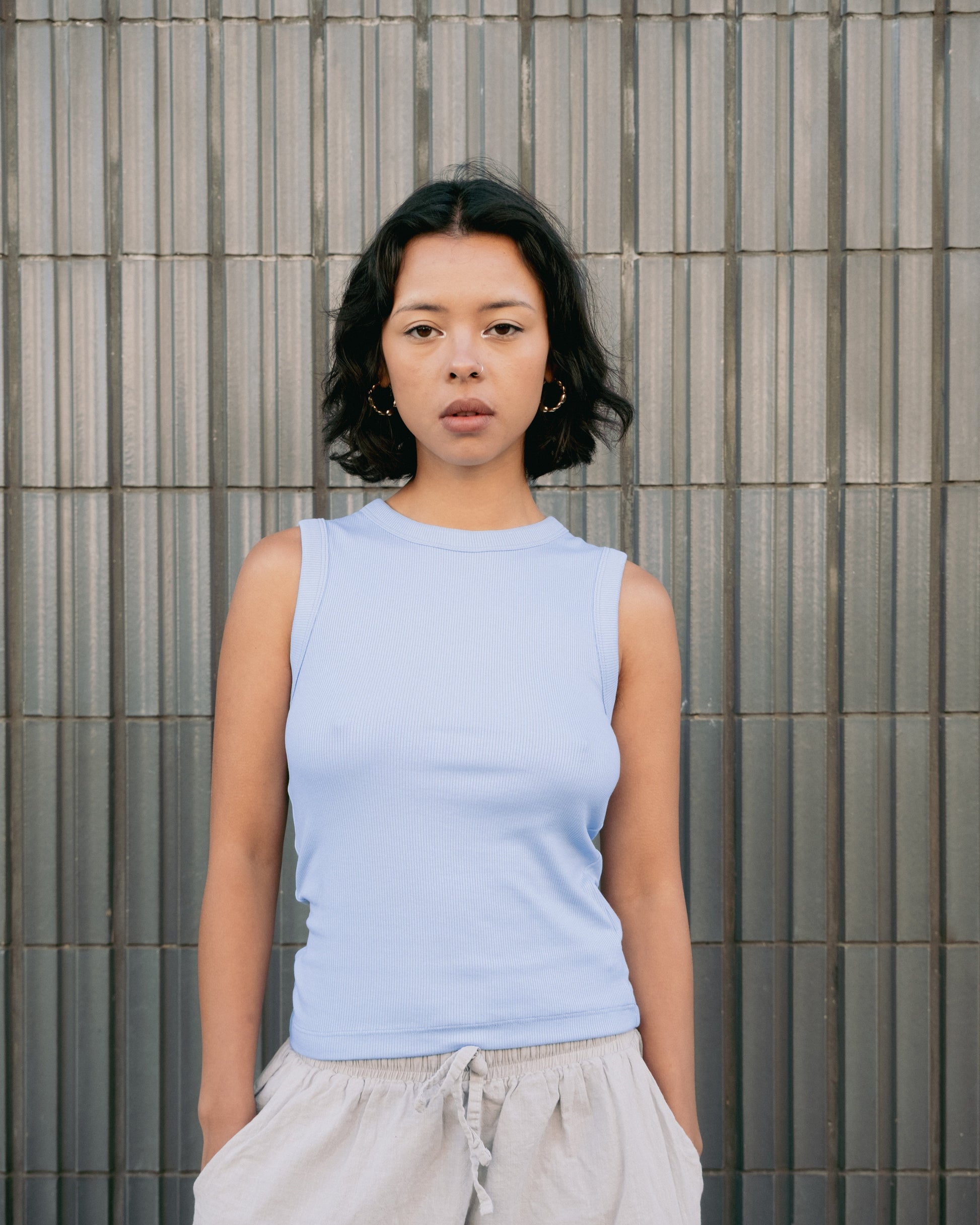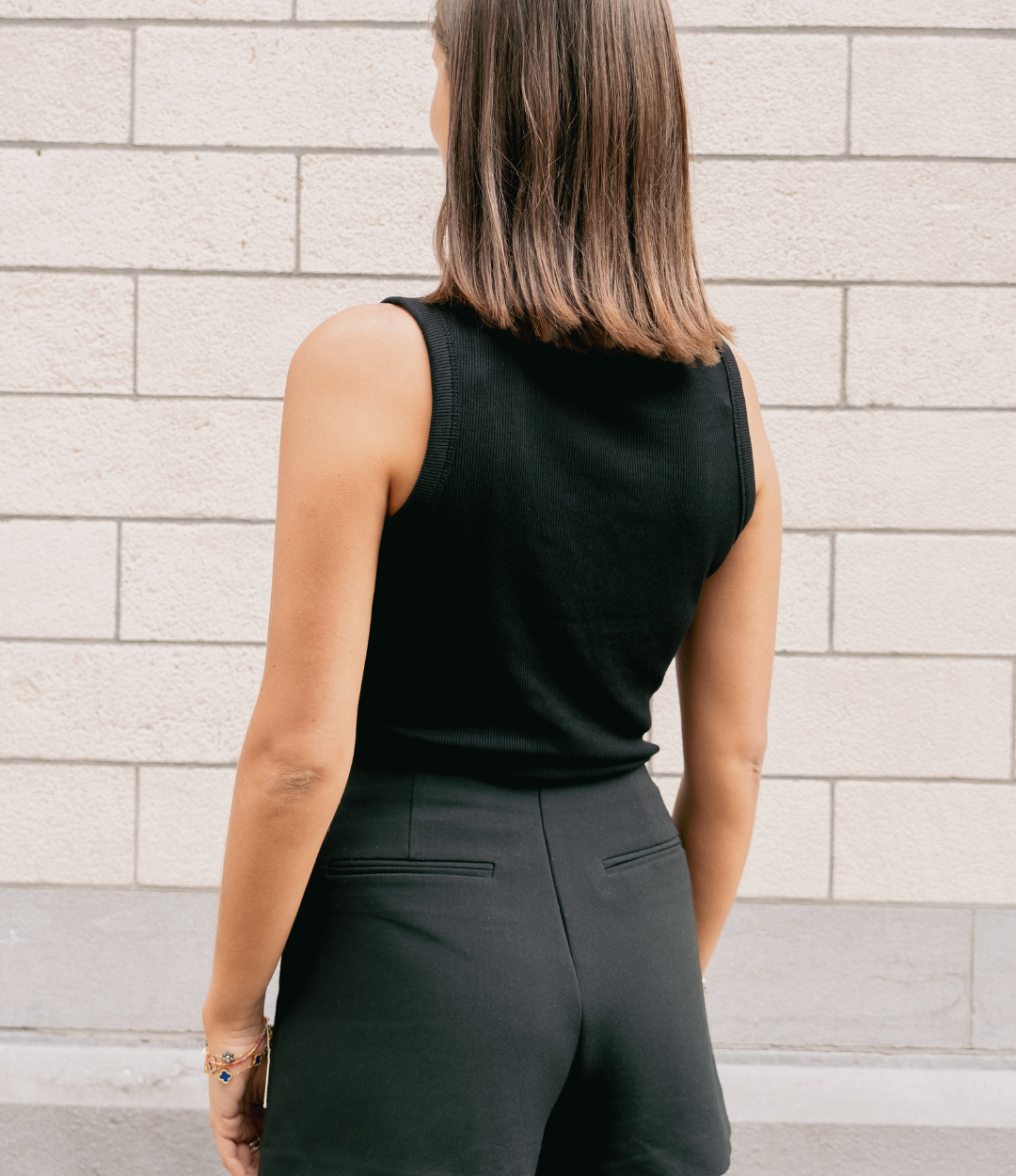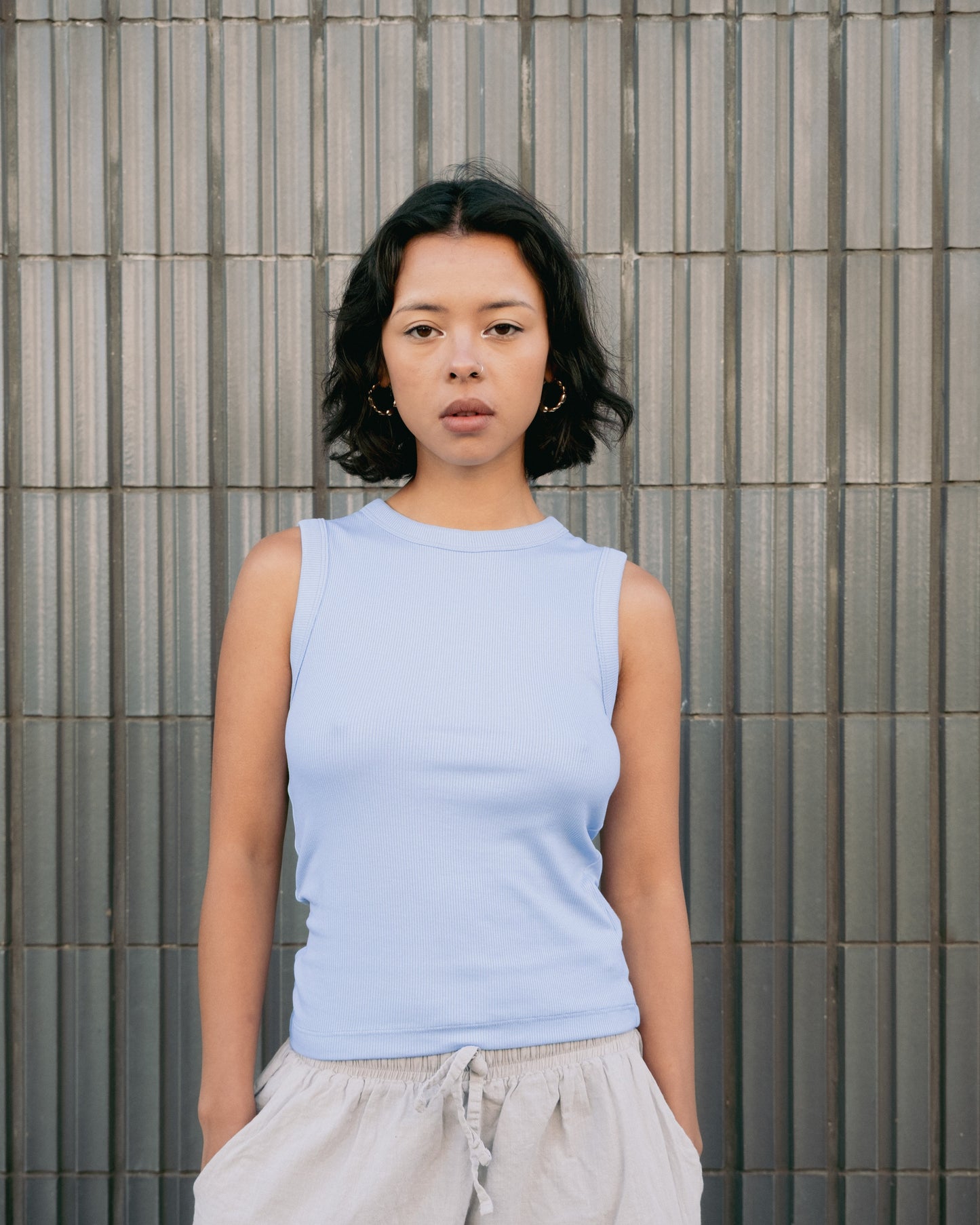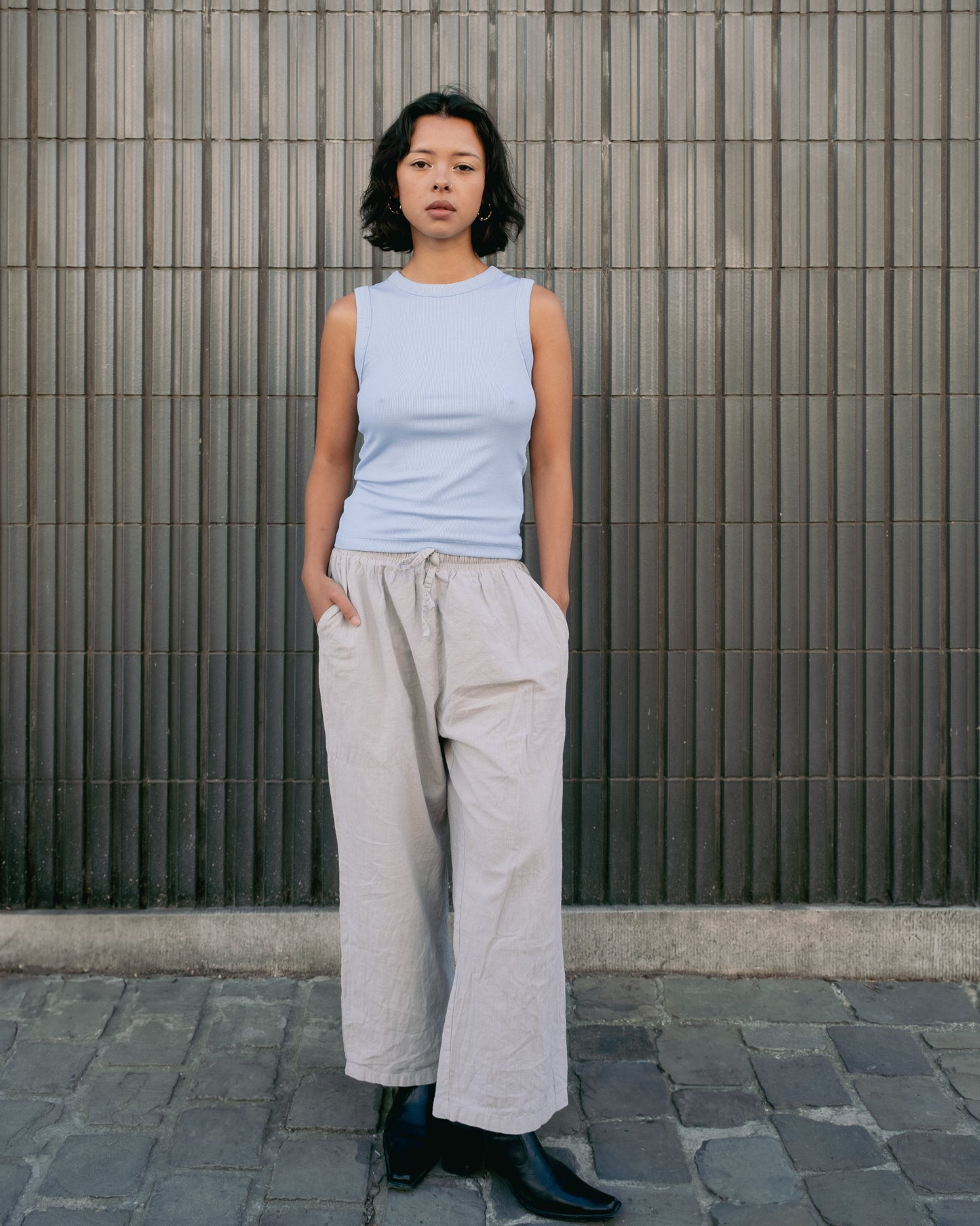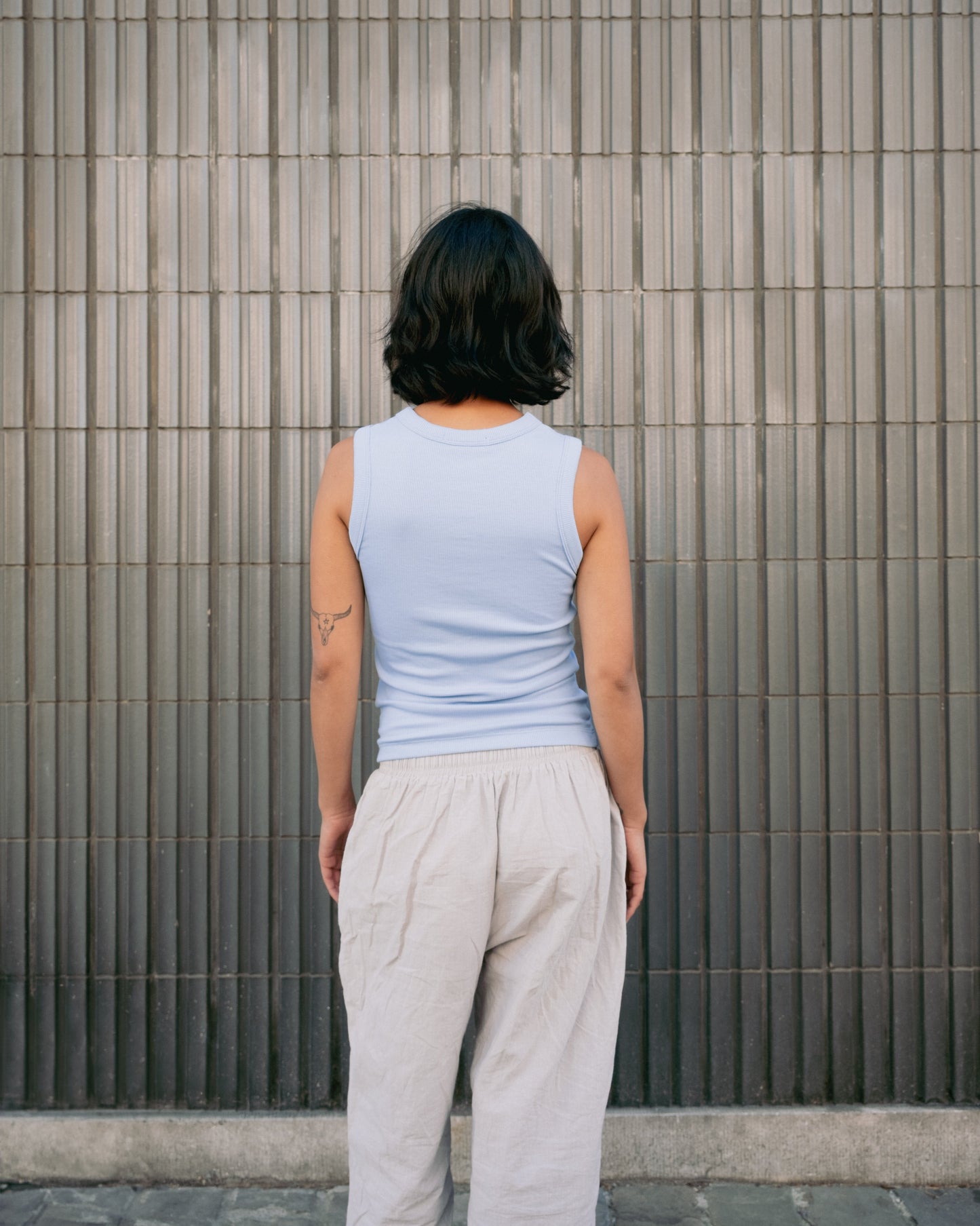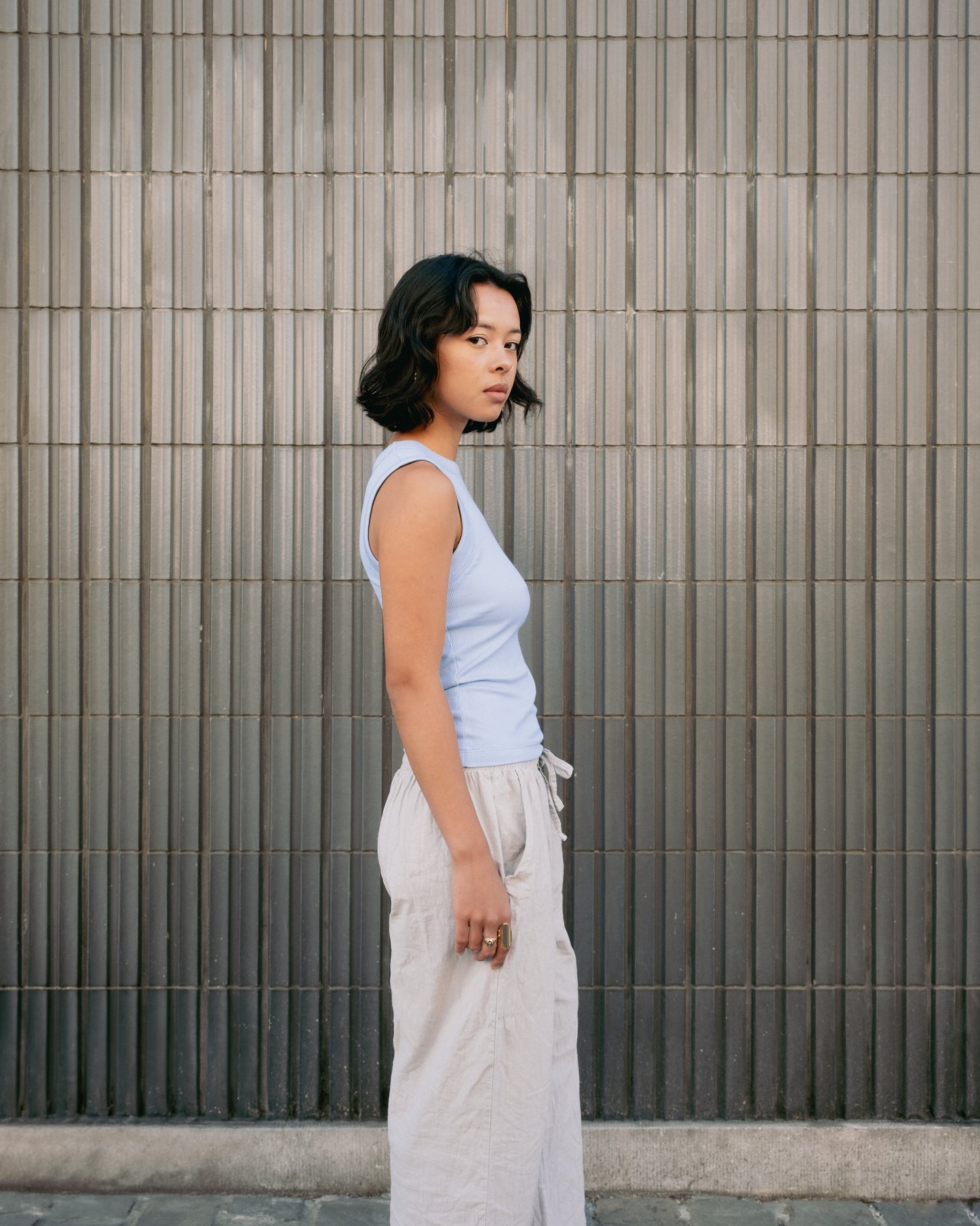When we talk about sustainable fashion, certain names often come up: recycled wool , organic cotton, recycled polyester, recycled cotton , linen ... But an outsider is gaining ground for good reasons: Tencel™ Lyocell . Still little known to the general public, it combines softness , durability and low environmental impact . Whether you're curious, committed or simply looking for comfortable and responsible clothing, this article is for you.
If you can't be bothered to read everything:
- 📖 Tencel is an artificial fiber made from wood from sustainably managed forests, processed using a closed-loop process that is much cleaner than traditional viscose.
- ✅ Comfortable, durable, breathable and eco-friendly, but still relatively expensive.
- 🌍 Production respectful of natural resources and 99% recycled solvents, which drastically reduces its footprint compared to other artificial fibers.
- 🧵Gentle wash at low temperature, air dry and iron at moderate temperature.
- 👗 Ideal for flowing, light, breathable and durable pieces: tops, dresses, pants, bed linen, etc.
-
🔄 Similar to Ecovero because it is made from sustainable wood cellulose, but it uses a more closed and versatile process.
What is Tencel and how is it made?
Tencell is a man-made fiber that belongs to the viscose family . It is made from cellulose , an organic molecule extracted from plants . In the case of Tencel, this cellulose comes mainly from eucalyptus, beech or birch wood pulp , grown in FSC® or PEFC™ certified forests .
Unlike conventional viscose, which uses highly polluting chemical processes, Tencel is produced via a closed-loop manufacturing process . This system allows 99% of the solvents (such as NMMO) to be recovered and reused , and the water used to be recycled over several cycles . The fiber is also naturally biodegradable and compostable (provided it is not mixed with other polluting materials or dyes, which may require additional handling).

What are the advantages and disadvantages of Tencel?
Benefits : |
Disadvantages : |
|
|
How does Tencel impact the environment?
Tencel ™ Lyocell stands out for its low environmental impact compared to conventional fibers :
-
The raw material comes from eco-managed forests .
-
The transformation takes place in a closed circuit , with 99% of the solvents and water reused .
-
The fiber is biodegradable and compostable .
-
Dyeing requires fewer chemicals due to its natural white color .
This system reduces the risks of deforestation , toxic releases into nature and limits overconsumption of water, making it one of the most sustainable artificial fibers available today .
How to care for Tencel textiles?
To maintain its qualities over time:
-
Wash at 30°C or cold with mild detergent.
-
Air drying recommended.
-
Iron at medium temperature (if necessary).
-
Avoid tumble drying, which can damage the fibers and reduce their lifespan.
What types of clothing is Tencel suitable for?
Thanks to its breathable, flexible, soft and resistant properties , Tencel is particularly suitable for these types of clothing:
-
👚 Flexible Tops and T-shirts
-
👖 Loose pants and shorts
-
👗 Light dresses and skirts
-
👙 Underwear and nightwear
-
🛏️ Bed linen and duvet covers
It is also very suitable for technical or summer clothing thanks to its ability to regulate temperature and wick away moisture .
Tencel vs. Ecovero: What are the differences and similarities?
At Lucid, we already use a fiber quite similar to Tencel in our PULSE women's tops : Ecovero. This fabric is also extremely soft, fluid, comfortable, biodegradable, and low-impact , but above all, it's also made using a nearly identical process.
-
Made from plant cellulose from eco-managed forests.
-
Certified sectors (FSC/PEFC).
-
Biodegradable and compostable .
-
Produced by Lenzing , a leading Austrian company.
Of course, there are some differences between these two fibers (otherwise they would have the same name). For starters, the manufacturing process varies because the Ecovero process is less closed and therefore uses more solvents. Ecovero uses a sodium hydroxide-based process, not a non-toxic (NMMO) solvent like Tencel.
Ecovero is often used for garments that are even lighter and more fluid than Tencel. That's why our tops are often the softest garment people have ever touched.
Ecovero is therefore slightly less interesting than Tencel , which dominates the viscose sector in terms of minimal environmental impact, but it remains an excellent alternative to traditional viscose and cotton, offering a low environmental impact. We also wrote an article on Ecovero , we invite you to read it if you are interested!
Conclusion
Tencel ™ Lyocell ticks all the boxes for a modern, eco-friendly and comfortable-to-wear textile . It represents a real step forward towards more responsible fashion and offers very interesting technical properties :
- 🌍 Reduced environmental impact
- 💧 Less water consumption
- ❌ No toxic solvents
- 👕 Everyday comfort
- ♻️ Biodegradability at end of life
In a world where every garment counts, investing in Tencel means supporting a cleaner, more ethical, and forward-looking textile industry . At Lucid, we'll definitely be incorporating it into our wardrobe very soon.
If you want to see the other pieces we already offer, don't hesitate to take a look at our collection , and if you want to see our tops in Ecovero , very similar to Tencel, don't hesitate!
Sources:
- Lenzing. (2023). What is TENCEL™ . Accessed on https://www.lenzing.com/products/tenceltm
-
Canopy. (2020). Second independent audit of Lenzing's raw material sourcing reaffirms 'low-risk' status . Consulted on https://canopyplanet.org/news/second-independent-audit-of-lenzings-raw-material-sourcing-re-affirms-low-risk-status
- Wedressfair. (2024). TENCEL™ Lyocell . Accessed on https://www.wedressfair.fr/matieres/tencel-lyocell?srsltid=AfmBOoo7bvAx8fSz7IBqP8QsOl8XVZVfcioXig4GjRSM-eJTPpEunS6O
- Good On You. (2023). What Is TENCEL Lyocell? And Is It Sustainable? Accessed at https://goodonyou.eco/how-ethical-is-tencel/




